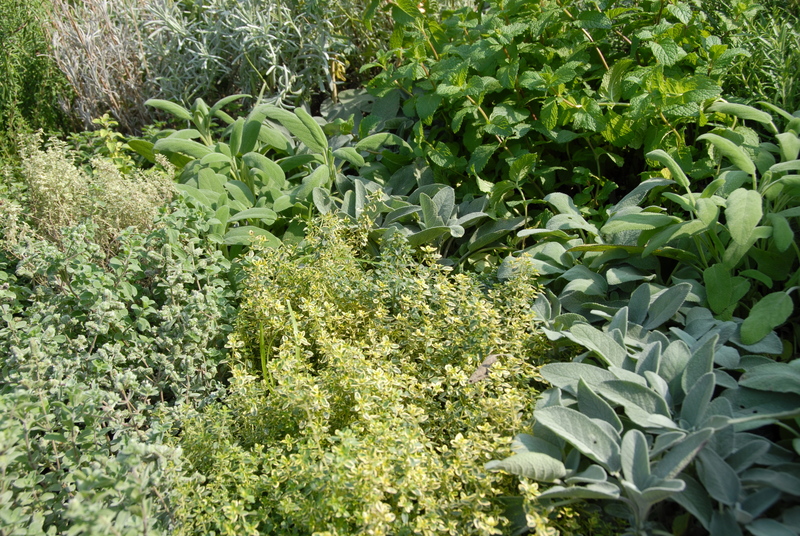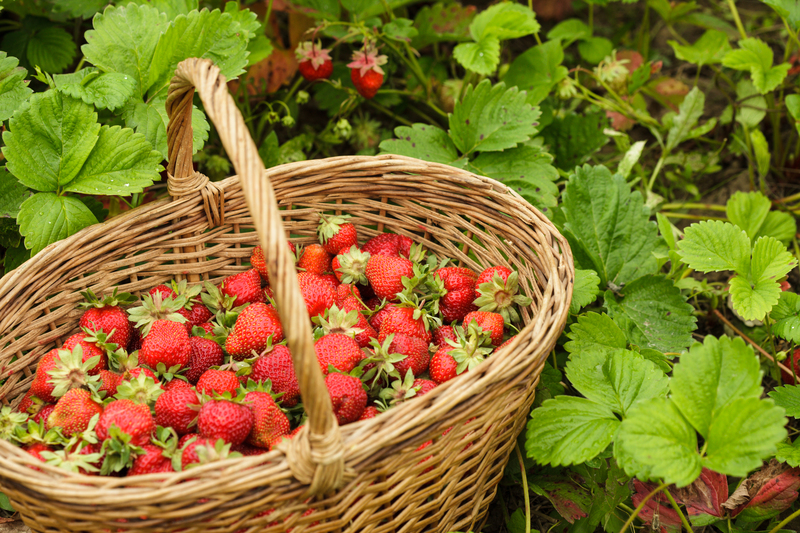Garden Pathways to a Climate-conscious World
Posted on 27/06/2025
Garden Pathways to a Climate-conscious World
The environment is at a crossroads, and as climate change challenges grow, so does our responsibility to find creative solutions within our reach. One surprising yet impactful approach lies right outside our doors: garden pathways. These are more than just walkways through your yard; they can be powerful tools for promoting a climate-conscious lifestyle. Discover how your garden paths can contribute to a greener, more sustainable future!
The Role of Garden Pathways in Climate-conscious Landscaping
Traditionally, garden pathways have been designed for aesthetics and convenience. However, with growing environmental awareness, garden paths are being reimagined as eco-friendly features that combine beauty, function, and sustainability.
- Reduce Soil Erosion: Pathways minimize soil disturbance and help to control the flow of water, reducing runoff and promoting water absorption.
- Promote Biodiversity: Thoughtfully designed paths can carve out habitats and travel corridors for insects, pollinators, and small animals.
- Encourage Regenerative Landscapes: Pathway edges can be planted with native, climate-adapted species, boosting resilience to weather extremes.
What Makes a Pathway "Climate-Conscious"?
Creating garden pathways for a sustainable world involves making thoughtful choices in materials, layout, and maintenance. Here's how you can make a difference:
- Use Permeable Materials: Opt for gravel, stone, bark, or permeable pavers. These allow rainwater to soak into the soil, recharging groundwater and reducing flooding.
- Select Low-impact Materials: Choose locally sourced or recycled products to minimize transport emissions and resource extraction.
- Design for Minimal Land Disturbance: Follow natural land contours and use curves rather than straight lines. This preserves native soil and reduces the need for excavation.
- Integrate with Nature: Use plants to soften edges, stabilize slopes, and increase carbon capture along the pathway.

Innovative Pathway Designs That Benefit the Planet
Garden pathways are evolving far beyond basic stepping stones. Here are several approaches to building pathways that nurture a climate-resilient garden:
Rain Gardens and Swale Paths
Rain gardens and swale-integrated walkways collect and filter stormwater, turning a potential source of erosion into a resource for your landscape. Native, deep-rooted plants along the pathway help absorb runoff, filter pollutants, and attract beneficial wildlife.
Green Roof or Living Walkways
In urban spaces, living pathways made from interplanted groundcovers between pavers inject green space and help mitigate the urban heat island effect. Creeping thyme, sedums, and mosses underfoot sequester carbon and support local pollinators.
Edible Pathways
Create a trail lined with herbs, berry bushes, or vegetables. These edible garden paths double as a source of fresh food and carbon sink, especially when paired with compost-driven soil improvement techniques.
Recycled and Upcycled Hardscape
Building climate-friendly garden walkways using reclaimed brick, broken concrete (urbanite), or recycled rubber mats diverts material from landfills while reducing demand for new resources.
How Garden Pathways Combat Climate Change
Wondering if your path really makes a difference? Here are concrete ways eco-friendly garden walkways help address climate challenges:
- Carbon Sequestration: Paths lined with trees, shrubs, or groundcover actively draw carbon dioxide from the air into soil and roots.
- Stormwater Management: Permeable materials allow rainfall to infiltrate and recharge groundwater tables, lessening flood risk and supporting drought-tolerant landscapes.
- Promoting Native Biodiversity: Thoughtful pathway borders bring habitat and food for birds, bees, and butterflies important for pollination and ecosystem resilience.
- Reducing Urban Heat: Living pathways cool the environment and balance temperature extremes, helping to offset the concrete "heat island" effect in cities.
- Supporting Low-maintenance Landscapes: Drought-adapted borders and permeable surfaces require less water and fertilizer, shrinking your carbon footprint.
Choosing Sustainable Pathway Materials
Material choice is critical to the climate impact of your garden pathways. Here are some environmentally responsible garden path options:
Gravel and Crushed Stone
- Benefits: Highly permeable, flexible, and inexpensive.
- Climate Impact: If sourced locally, it minimizes transportation emissions. Light-colored gravel can also reflect heat.
Recycled Bricks and Pavers
- Benefits: Durable, often free or low-cost, add character, and reduce landfill waste.
- Climate Impact: Using reclaimed materials preserves historic charm while slashing embodied energy compared to new products.
Mulch and Bark
- Benefits: Soft underfoot, completely permeable, decomposes to feed soil.
- Climate Impact: Mulch from local tree trimming operations or your own garden prunings can be nearly carbon-neutral.
Permeable Concrete or Pavers
- Benefits: Allows water infiltration, strong enough for bikes or wheelbarrows.
- Climate Impact: Use sparingly and prioritize products with recycled content or lower-carbon cement alternatives if available.
Living Groundcovers
- Benefits: Aesthetically pleasing, attract pollinators, repair themselves, and sequester carbon.
- Climate Impact: Native groundcovers are best, as they require less water and no chemical inputs.
Designing Your Garden Pathway with the Climate in Mind
Step 1: Site Assessment
Consider the existing topography, soil types, drainage, and sunlight. Work with the land's natural contours to minimize disturbance.
Step 2: Layout
Curved pathways slow water runoff and provide a more natural appearance. Place main paths where they're most needed but consider secondary trails for maintenance access or wildlife corridors.
Step 3: Edge Planting
Frame your path with native grasses, ferns, or flowering perennials that provide ecological benefits. Layering heights and staggered bloom times amplify their impact for pollinators.
Step 4: Material Selection
Weigh the pros and cons of each material (as discussed above), prioritizing local supply and sustainable sourcing.
Step 5: Water-conscious Construction
Install permeable sub-bases under gravel or pavers, add rain garden features, or contour paths to drain toward planting beds.
Step 6: Ongoing Care
Use organic mulches, avoid chemical weed killers, and supplement rainfall with greywater or captured rainwater for irrigation.
Beyond the Backyard: Pathways in Public Projects
Climate-resilient garden pathways are not just for home gardens. Cities that integrate permeable walkways, green corridors, and edible landscapes into parks and public spaces see broad benefits:
- Improved Air Quality: More plants mean cleaner air for city dwellers.
- Urban Flood Control: Permeable paths reduce water runoff and storm drain overloads.
- Enhanced Community Well-being: Green walkways promote recreation, mental health, and neighborhood pride.
Examples can be found worldwide, from the High Line in New York (a converted rail line supporting native meadows and pedestrian traffic), to Singapore's Gardens by the Bay with its intricate pathways connecting lush climate-adapted displays.
Addressing Common Concerns
Are Permeable Paths Durable?
Yes! Eco-friendly garden pathways can be as long-lasting as traditional hardscapes, especially when properly constructed on a stable sub-base.
How Much Maintenance Is Involved?
Thoughtful design--using drought-tolerant edge plants, native groundcovers, and layered mulches--keeps maintenance low. Occasional weeding or topping up loose materials may be needed.
Can Sustainable Pathways Fit Any Garden Style?
Absolutely. From modern minimalism to lush cottage gardens, garden pathways for a climate-friendly future can be tailored to any aesthetic using your choice of material and layout.

Tips for Taking Action
- Start Small: Upgrade a single path with reclaimed materials or permeable surfaces before taking on larger projects.
- Collaborate: Team up with neighbors for community pathways or wildlife corridors that span multiple yards.
- Educate: Share your success and inspire others with signage, social media, or local gardening groups.
- Support Local Nurseries: Source plants and materials from businesses committed to sustainability.
Conclusion: Walk the Climate Path--Literally!
Our gardens are more than personal retreats; they are ground zero for climate solutions. By building garden pathways to a climate-conscious world, we join a global movement for sustainable change. Each gravel step, fragrant thyme mat, or reclaimed-brick border is an investment in the health of our planet and our communities.
Let your next garden path be a literal and symbolic journey--toward sustainability, beauty, and a future where every footprint leaves a positive mark. Garden pathways truly are gateways to a climate-conscious world.
Further Resources:
- EPA Green Infrastructure Resources
- National Wildlife Federation: Garden for Wildlife
- RHS Gardening for the Environment
Take the first steps down your personal Garden Pathway to a Climate-conscious World--start today!



